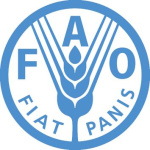- Industry: Agriculture
- Number of terms: 87409
- Number of blossaries: 0
- Company Profile:
Established in October 1945 with the objective of eliminating hunger and improving nutrition and standards of living by increasing agricultural productivity, FAO coordinates the efforts of governments and technical agencies in programs for developing agriculture, forestry, fisheries, and land and ...
An added or injected substance that can be followed within a reaction or an organism, such as radioactive isotopes and certain dyes.
Industry:Biotechnology
An agent or process which is capable of inducing a mutation, such as UV light.
Industry:Biotechnology
An agent, such as PEG, mannitol, glucose or sucrose, employed to maintain the osmotic potential of a nutrient medium equivalent to that of the cultured cells (isotonic). Because of this osmotic equilibrium, cells are not damaged <i>in vitro</i>.
Industry:Biotechnology
An agitated suspension in culture providing adequate aeration for cells in the liquid medium. Usually an Erlenmeyer flask containing the culture is attached to a horizontal or platform shaker, or agitated with a magnetic stirrer.
Industry:Biotechnology
An amino acid sequence that has been engineered into a protein to make its purification easier. These can work in a number of ways. The tag could be another protein, which binds to some other material very tightly and thus allowing the protein to be purified by affinity chromatography (q.v.). The tag could be a short amino acid sequence, which is recognized by an antibody. The antibody would then bind to the protein whereas it would not have done so before. One such short peptide, called FLAG, has been designed so that it is particularly easy to make antibodies against it. The tag could be a few amino acids, which are then used as a chemical tag on the protein. For example, a string of positively charged amino acids will bind very strongly to a negatively charged filter: this could be used as the basis of a separation system. Some amino acids bind metals very strongly, especially in pairs: this chemical property can be exploited by using a filter with metal atoms chemically linked onto it to pull a protein out of a mixture of proteins.
Industry:Biotechnology
An amino acid sequence that has been engineered into a protein to make its purification easier. These can work in a number of ways. The tag could be another protein, which binds to some other material very tightly and thus allowing the protein to be purified by affinity chromatography (q.v.). The tag could be a short amino acid sequence, which is recognized by an antibody. The antibody would then bind to the protein whereas it would not have done so before. One such short peptide, called FLAG, has been designed so that it is particularly easy to make antibodies against it. The tag could be a few amino acids, which are then used as a chemical tag on the protein. For example, a string of positively charged amino acids will bind very strongly to a negatively charged filter: this could be used as the basis of a separation system. Some amino acids bind metals very strongly, especially in pairs: this chemical property can be exploited by using a filter with metal atoms chemically linked onto it to pull a protein out of a mixture of proteins.
Industry:Biotechnology
An amino acid that cannot be synthesized by animals and therefore has to be ingested with feed or food.
Industry:Biotechnology
An analytical method for separating molecules according to their size. Samples are put at one end of a slab of polymer gel; an electric field across the gel pulls the molecules through it; the smaller molecules pass more easily and so move towards the other end faster; the various sizes of molecules end up at different positions according their size. Gels are made from different materials.
Various chemicals can be included in the gel to help separation, such as the detergent sodium dodecyl sulphate (SDS) in protein gels to unfold proteins, or urea in DNA sequencing gels, which unfolds DNA.
Industry:Biotechnology
